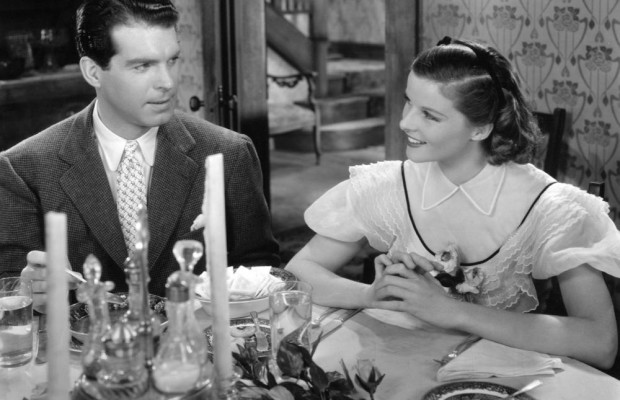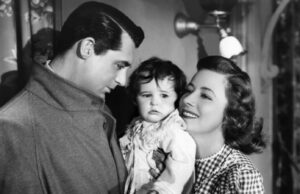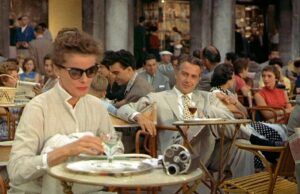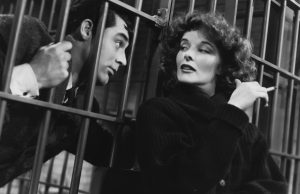Alice Adams (1935)

Toronto Film Society presented Alice Adams (1935) on Monday, November 25, 1974 in a double bill with History is Made at Night as part of the Season 27 Monday Evening Film Buff Series, Programme 1.
Production Company: An RKO Radio Picture. Producer: Pandro S. Berman. Director: George Stevens. Screenplay: Dorothy Yost, Mortimer Offner. Based on the Novel by: Booth Tarkington. Adaptation for the Screen: Jane Murfin. Photography: Robert De Grasse. Art Direction: Van Nest Polglase. Editing: Jane Loring. Sound Recording: Denzil A. Cutler. Musical Score: Max Steiner. Costumes: Walter Plunkett. Makeup: Mel Burns. Assistant Director: Edward Killy. Song: “I Can’t Waltz Alone”: Max Steiner, Dorothy Fields.
Cast: Katharine Hepburn (Alice Adams), Fred MacMurray (Arthur Russell), Fred Stone (Mr. Adams), Evelyn Venable (Mildred Palmer), Frank Albertson (Walter Adams), Ann Shoemaker (Mrs. Adams), Charles Grapewin (Mr. Lamb), Grady Sutton (Frank Dowling), Hedda Hopper (Mrs. Palmer), Jonathan Hale (Mr. Palmer), Janet McLeod (Henrietta Lamb), Virginia Howell (Mrs. Dowling), Zeffie Tilbury (Mrs. Dresser), Ella McKenzie (Ella Dowling), Hattie McDaniel (Malena), Harry Bowen (Laborer).
Booth Tarkington’s 1921 Pulitzer Prize-winning novel was filmed once previously, in 1923, directed by Rowland V. Lee and starring Florence Vidor as Alice. Alice Adams was written as a sociologically realistic study of a mildly impoverished, socially ambitious, young girl suffering the anguish, embarrassment and disappointments of growing up in small-town Americana. The 1923 version remained reasonably faithful to the novel’s dispirited ending, thereby retaining a measure of Tarkington’s realism, whereas tonight’s film, no doubt influenced by a strong romantic trend in 1930’s American cinema, gave Alice and her family all they ever wished for. Hepburn initially rebelled (she had wanted to do Tarkington’s “Seventeen” with William Wyler) at the choice of Stevens, a minor director of but five previous ‘B’ features, as the director of the film. Alice Adams proved to be a milestone film for both of them. It virtually launched Stevens’ career (causing him to be called the youngest important director in Hollywood) and anchored Hepburn’s status as a top actress.
Katharine Hepburn’s (b. November 9, 1907) remarkable career (forty-two years as a top star) is highlighted by some of the finest ’30’s films that still stand up favourably to modern criticism, among them: Morning Glory (1933), Little Women (1933), Alice Adams, Mary of Scotland (1936), Quality Street (1937), Stage Door (1937), Bringing Up Baby (1938), Holiday (1938) and The Philadelphia Story (1940). Her amazing élan and driving energy, elfin verve, her sense of being totally in command of herself at all times, her fierce individualism, and her passionate sincerity were all evident from her very first film, A Bill of Divorcement (1932). Hers was not a surface physical beauty, but something incandescent that burned from within and was drawn out simply by the sheer power of the illusion created by her acting. Critics who complained that Hepburn’s Alice was over-accented and mannered missed the point of her performance–Hepburn overacted as a pretentious Alice would have overacted to impress people. The happy ending can be justified by the passionate sincerity of Hepburn’s acting, rendering it inconceivable that Alice won’t do everything she says she’s going to do.
George Stevens (b. December 18, 1904) started out as a cameraman in the mid ’20’s (including several Laurel and Hardy shorts), then directed some shorts, before making his first feature film in 1933. In many cinema histories Stevens is revered for his grand epics, films like Shane (1953), Giant (1956), and The Diary of Anne Frank (1959); but his earlier, more intimate, personal films, Aluice Adams, Swing Time (1936), Gunga Din (1939), Penny Serenade (1941), Women of the Year (1942) etc. were the ones that established his reputation as an American Romantic, an intricate craftsman and perfectionist.
Notes by Jaan Salk













Leave a Reply